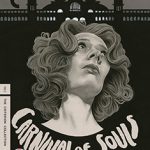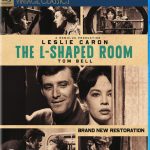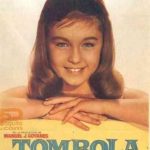-
Harakiri Blu-Ray + DVD 1962 (Original)
$37.99Peace in 17th-century Japan causes the Shogunate’s breakup of warrior clans, throwing thousands of samurai out of work and into poverty. An honorable end to such fate under the samurai code is ritual suicide, or hara-kiri.
This is 100% Genuine product.
Region: 2
Important: A lot of DVD players around now are region free – which play any DVD region. It completely depends on what DVD player you have.
We actually have a number of regular customers based in the US, Canada and Australia who never have problems with our region 2 discs. -
The Pot Carriers DVD 1962 (Original)
$46.99New inmate Rainbow has just been imprisoned for a year for his part in a fight over his girlfriend Wendy. After being assigned to kitchen duty, he becomes involved in a food-trading racket. When the scheme is betrayed to the prison’s governor, its prime mover is threatened with an extended sentence – unless Rainbow can come up with a way to save him.
This is 100% Genuine product.
Region: 2
Important: A lot of DVD players around now are region free – which play any DVD region. It completely depends on what DVD player you have.
We actually have a number of regular customers based in the US, Canada and Australia who never have problems with our region 2 discs. -
Carnival Of Souls (Criterion Collection) (Original)
$46.99Mary Henry ends up the sole survivor of a fatal car accident through mysterious circumstances. Trying to put the incident behind her, she moves to Utah and takes a job as a church organist. But her fresh start is interrupted by visions of a fiendish man. As the visions begin to occur more frequently, Mary finds herself drawn to the deserted carnival on the outskirts of town. The strangely alluring carnival may hold the secret to her tragic past.
This is 100% Genuine product.
Region: 2
Important: A lot of DVD players around now are region free – which play any DVD region. It completely depends on what DVD player you have.
We actually have a number of regular customers based in the US, Canada and Australia who never have problems with our region 2 discs. -
Knife In The Water (Original)
$41.99On their way to a sailing trip, an aging husband and wife invite along an emphatic young hitchhiker out of sheer patronization.
This is 100% Genuine product.
Region: 2
Important: A lot of DVD players around now are region free – which play any DVD region. It completely depends on what DVD player you have.
We actually have a number of regular customers based in the US, Canada and Australia who never have problems with our region 2 discs. -
The L-Shaped Room (Original)
$25.00Leslie Caron plays a young, pregnant, unmarried Frenchwoman who takes a room in a seedy boarding house in London. She soon makes friends with Toby, a struggling writer who lives downstairs, and eventually gets to accept her room and the strange characters in the house. But what to do about her baby? And what to do about Toby?
This is 100% Genuine product.
Region: 2
Important: A lot of DVD players around now are region free – which play any DVD region. It completely depends on what DVD player you have.
We actually have a number of regular customers based in the US, Canada and Australia who never have problems with our region 2 discs. -
Tómbola (1962)
$25.00Marisol is a young girl with a vivid imagination and a heart of gold who witnesses a picture robbery in a museum…
-
Los inundados (1962)
$25.00Government bureaucracy and ineptitude, as well as social foibles, get a drubbing in this socio-political satire by director Fernando Birri. Everything starts when the families in a poor, mud-hut neighborhood lose what little they own in a bad flood. In steps the militia to rescue them, and then the local government comes next as the politicos hope to gain points by relocating the group of unfortunates. Nothing goes right for the essentially honest, simple villagers who are now the dispossessed. One family seeks temporary shelter in a boxcar and ends up being attached to a train that then takes them on an interesting journey. Meanwhile, no one seems able to help them out and when the hubbub has died down, the families are not much different than when the flood first washed them out. Director Fernando Birri was particularly interested in Neorealism and would eventually move to Cuba.
-
Los atracadores (1962)
$25.00Nothing seems to go right for the young trio who form the nexus of this drama about the effects of criminal behavior. The white-collar son of a lawyer is anxious to form a gang to rebel against what he considers to be the mistakes of the current establishment. He soon gets the son of a factory worker involved in his mission, and one other fellow, a petty criminal, also joins up. When the sister of one of the men has a harrowing encounter with white slavers the impromptu gang wreaks revenge on the culprits, but then the police get into the act and tragedy is the result.
-
The Brainiac (1962)
$25.00In 1661 Mexico, the Baron Vitelius of Astara is sentenced to be burned alive by the Holy Inquisition of Mexico for witchcraft, necromancy, and other crimes. As he dies, the Baron swears vengeance against the descendants of the Inquisitors. 300 years later, a comet that was passing overhead on the night of the Baron’s execution returns to earth, bringing with it the Baron in the form of a horrible, brain-eating monster that terrorizes the Inquisitor’s descendants
- Home
- PROMOS
- Pre-Order
- SALE
- Shop
- Action
- Adventure
- Animation
- Art
- Astrology & Space
- Biography
- Body & Mind
- Bollywood
- Comedy
- Crime
- Dance
- Documentary
- Drama
- Family
- Fantasy
- Fitness
- Food & Drink
- Foreign
- Garden & Home
- History
- Horror
- Kids
- Merchandise
- Movie & Theatre
- Musical
- Music
- Mystery
- Nature & Wildlife
- Religion
- Romance
- Science Fiction
- Soap
- Special Interest
- Sport
- Stand-Up
- Thriller
- Transport
- Travel & Places
- TV Movie
- War
- Western
- World
- Boxsets
- TV Series
- HD
- Top Rated
- Merchandise
- Search
- Blog
- My Account












